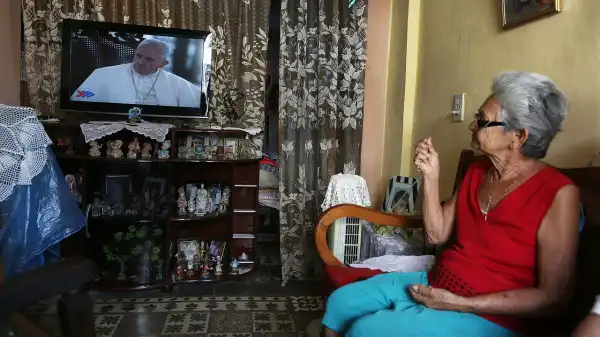
Save this storySave this storySave this storySave this story
Shortly after Pope Francis’s death on Monday, the Vatican released a brief document he had drawn up in 2022 outlining his final wishes for how and where he should be laid to rest and how all the procedures surrounding it should be carried out. The pope, perhaps best known for his devotion to simplicity and distaste for ecclesiastical opulence, expressed his wish to be buried not in the Vatican but in the papal basilica of Santa Maria Maggiore, which he visited to pray before and after each of his international trips. He emphasized that his tomb “should be in the ground; simple, without frills, and with a single inscription: Franciscus,” his papal name written in Latin.
These directives highlight the paradox of his flamboyant personality. On the one hand, he insisted that the Church he ruled be less concerned with surface appearances and stylistic excesses, the distracting aesthetics of ornate priestly vestments and complex liturgical traditions, and more focused on the essence of the Christian message: concern for the poor, a preference for the geographic and existential “outskirts” and the people who inhabited them, and the features of Christ illuminated by the spirit of joy, peace, and love. Yet throughout his twelve years of pontificate, the pope proved himself a master maker and distributor of images. He had a style all his own—the modest clothes, the simple public squares, his friendly hand clasping yours—and he could be as controlling in his expression as the ritual-obsessed traditionalists with whom he sometimes clashed in his public appearances.
Francis was an avid reader. In a public letter on the importance of literature in the formation of priests, he lamented the way audiovisual media like television can simplify complexities. “The time available to ‘enrich’ a narrative or explore its meaning is usually very limited,” he noted. For him, literature had deeper, more meaningful aspects:
A book requires a greater personal involvement on the part of the reader. Readers in a sense rewrite the text, expanding its boundaries with their imagination, creating an entire world using their skills, memories, dreams, and personal history with all its drama and symbolism. In this way, a text emerges that is completely different from what the author intended. A literary work is thus a living and ever-fertile text, capable of constantly speaking differently and generating an original synthesis from the point of view of each of its readers.
But here is the paradox: Francis became a “TV pope.” His writings could be startlingly beautiful. His encyclical on the environment, “Laudato Si’,” will be read for years to come; “Fratelli Tutti,” on the brotherhood of all men, is a remarkable expression of Christian humanism. But his greatest gift was to imbue the images he broadcast everywhere with the “drama and symbolism” he encouraged young priests to look for in books. And even his most memorable utterances felt like random sound bites: when asked about gay priests during an impromptu press conference on an airplane, he replied, “Who am I to judge?” Shortly after his election as pope, he stepped onto a high balcony and casually called out to the crowd, “Buona sera!”—good evening. He created his charismatic persona not on the pages of books but in images and impromptu conversations, the stuff of screens.
Francis’s final instructions, then, can be seen as the detailed notes of a producer who understood he wouldn’t be there to run the show. Watching his funeral on Saturday morning (the East Coast time difference meant waking up just before 4 a.m.), it was hard not to interrupt the live feed every few seconds and let the day’s compelling footage evoke “a whole world” of memories of the late pope.
Papal Gentlemen—laymen who attend to the pope’s personal needs and assist in his displays of hospitality and diplomacy—acted as pallbearers in black suits, carrying the simple wooden coffin that held Francis’s body. The coffin was wheeled into St. Peter’s Square, beneath the balcony from which Francis had made his first informal greeting. The square itself, silently glittering under what looked like a clear, high sun and a bright blue sky, was full of well-wishers—sloshing, bustling, cheering as they saw the coffin shifting unpredictably like waves on the high seas.
More than five years ago, Francis stood in the same square one evening to say a prayer as the COVID pandemic worsened. In an empty square, the pope walked slowly toward the altar, his heavy movement a symbol of the pain that had gripped the world. A man in white, silence around him
Sourse: newyorker.com